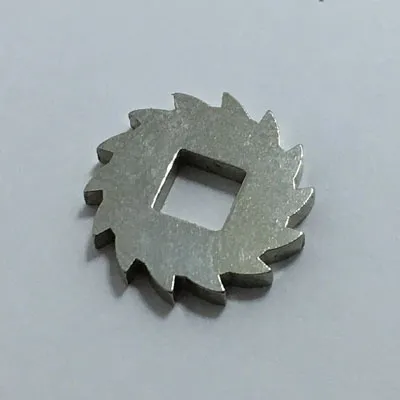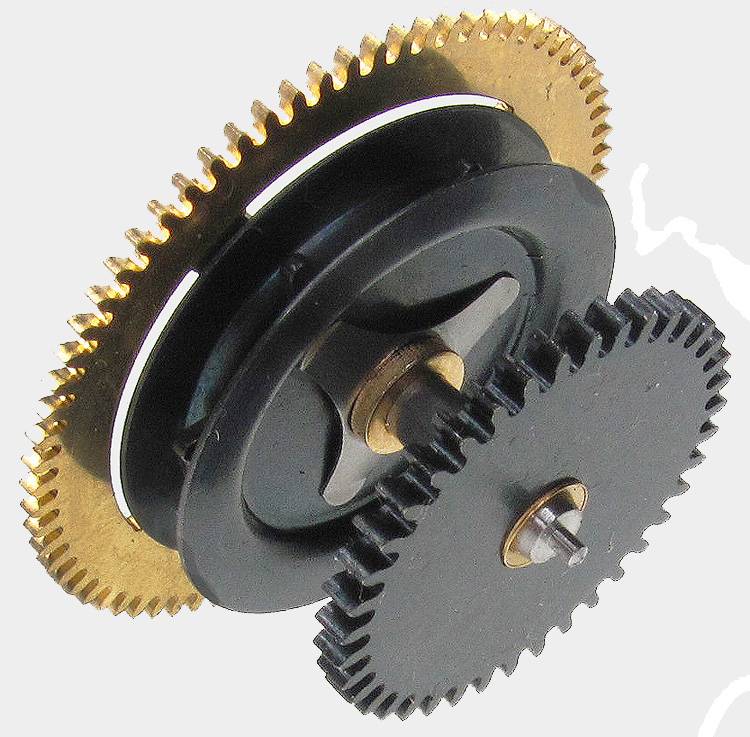Product Description
Pulling Wheel Manufacturing for CNC5-Axis Machining
Pulling Wheel Manufacturing for CNC5-Axis Machining
Experience the precision and durability of our custom pulling wheels designed for CNC5-Axis Machining. At HangZhou Xihu (West Lake) Dis.an Hardware Technology Co., Ltd., we specialize in the production and processing of electronic spindles, mechanical accessories, metal products, aluminum alloys, stainless steel products, and CNC5-axis machining.
Our pulling wheels are expertly crafted using high-quality alloy steel, ensuring exceptional strength and longevity. With advanced 5-axis machining technology, we guarantee precise and reliable performance for your terminal machines, conveying wheels, carrier pin wheels, and ratchets.
Whether you need industrial pulling wheels or precision pulling wheels, our custom manufacturing process allows us to meet your specific requirements. Our heavy-duty pulling wheels are built to withstand demanding applications, providing you with a reliable solution for your industrial needs.
Key Features:
- High-quality alloy steel construction
- Precision machining for accurate performance
- Customizable options to meet your specific needs
- Durable design for long-lasting use
Trust in our expertise and experience in CNC machining to deliver the pulling wheels you need. Contact HangZhou Xihu (West Lake) Dis.an Hardware Technology Co., Ltd. today to discuss your requirements and benefit from our advanced 5-axis machining capabilities.
Pulling Wheel Manufacturing for CNC5-Axis Machining
Pulling Wheel Manufacturing for CNC5-Axis Machining
Welcome to HangZhou Xihu (West Lake) Dis.an Hardware Technology Co., Ltd., a trusted manufacturer with over 20 years of experience in production technology. Located in the serene city of HangZhou, ZheJiang Province, China, we specialize in the production and processing of high-quality pulling wheels for CNC5-Axis Machining.
Our factory boasts a spacious workshop area of 2,000 square meters, where we master the high-end production core technology. Equipped with advanced precision production equipment, including CNC lathes, five-axis CNC, four-axis CNC, and auxiliary production equipment, we ensure the utmost precision and quality in every pulling wheel we manufacture.
At HangZhou Xihu (West Lake) Dis.an Hardware Technology Co., Ltd., we prioritize innovation and research and development. Our team consists of experienced designers, R&D personnel, and technical management experts who work diligently to deliver cutting-edge pulling wheel solutions.
Furthermore, we have a comprehensive testing facility that includes advanced three-dimensional and two-dimensional measurement tools, hardness testers, height gauges, projectors, and other conventional testing equipment. This ensures that every pulling wheel meets our stringent quality standards.
If you are in need of a custom pulling wheel for your terminal machine, conveying wheel, or carrier pin wheel, look no further. Our pulling wheels are made from durable alloy steel and undergo precise machining to guarantee exceptional performance and longevity.
Experience the benefits of our high-quality pulling wheels, which include:
- Smooth and reliable operation
- Precision and accuracy in machining
- Customizable options to suit your specific needs
- Heavy-duty construction for demanding industrial applications
Trust HangZhou Xihu (West Lake) Dis.an Hardware Technology Co., Ltd. for all your pulling wheel requirements. Contact us today to receive the best price support and quality service.
| After-sales Service: | Professional Service |
|---|---|
| Warranty: | 30 Days |
| Certification: | ISO9001, ISO, CE |
| Samples: |
US$ 100/Piece
1 Piece(Min.Order) | Order Sample |
|---|
| Customization: |
Available
|
|
|---|
.shipping-cost-tm .tm-status-off{background: none;padding:0;color: #1470cc}
|
Shipping Cost:
Estimated freight per unit. |
about shipping cost and estimated delivery time. |
|---|
| Payment Method: |
|
|---|---|
|
Initial Payment Full Payment |
| Currency: | US$ |
|---|
| Return&refunds: | You can apply for a refund up to 30 days after receipt of the products. |
|---|

Can you provide examples of machinery or equipment that commonly use ratchet wheels?
Ratchet wheels are commonly used in various machinery and equipment across different industries due to their ability to provide controlled motion and security. Here are examples of machinery and equipment that commonly incorporate ratchet wheels:
- 1. Ratchet Wrenches: Ratchet wrenches, also known as socket wrenches, utilize ratchet wheels to enable continuous tightening or loosening of nuts and bolts without the need to remove and reposition the wrench. The unidirectional motion of the ratchet wheel allows for efficient and convenient use.
- 2. Winches and Hoists: Winches and hoists, whether manual or powered, frequently employ ratchet wheels in their mechanisms. Ratchet wheels ensure controlled lifting, lowering, or pulling of loads while preventing unintended backdriving.
- 3. Handbrakes in Vehicles: Many vehicles, especially older models, feature handbrake systems that rely on ratchet wheels. These ratchet mechanisms secure the vehicle’s position when the handbrake lever is engaged, preventing the vehicle from rolling.
- 4. Tie-Down Straps: Ratchet mechanisms are integral components of tie-down straps used for securing cargo during transportation. They maintain tension in the strap and prevent slack, ensuring that the load remains securely fastened.
- 5. Conveyor Systems: Conveyor systems in manufacturing and logistics often incorporate ratchet wheels to control the movement of items along the conveyor belts. Ratchet wheels enable precise indexing and positioning of products.
- 6. Scaffold Systems: Scaffold systems used in construction frequently feature ratchet wheels in their height adjustment mechanisms. Workers can raise or lower scaffolding platforms incrementally, ensuring safety and stability.
- 7. Fishing Reels: Fishing reels, such as baitcasting and trolling reels, use ratchet wheels in their drag systems. This allows anglers to smoothly reel in fish while preventing the fish from pulling out line unintentionally.
- 8. Safety Mechanisms: Various safety mechanisms and emergency stop systems employ ratchet wheels to ensure that once activated, the system remains in a safe state until intentionally reset. This is crucial in industrial and machinery safety applications.
These examples demonstrate the versatility of ratchet wheels in different industries and applications where controlled motion, security, and prevention of reverse movement are essential requirements.

Can you share tips for selecting the right ratchet wheel based on specific industry requirements and load capacities?
Selecting the right ratchet wheel for your application involves considering industry-specific requirements and load capacities. Here are some tips to help you make an informed choice:
- 1. Determine Load Capacity: Identify the maximum load or torque that your ratchet wheel needs to handle. Choose a ratchet wheel with a load capacity that comfortably exceeds your application’s requirements to ensure safety and reliability.
- 2. Material Selection: Consider the environment in which the ratchet wheel will operate. Stainless steel or corrosion-resistant materials are ideal for outdoor or harsh conditions, while plastic ratchet wheels may be suitable for lighter-duty applications.
- 3. Tooth Profile and Design: The tooth profile and design of the ratchet wheel should match your specific application. For precise control, choose a ratchet wheel with well-designed teeth that engage smoothly with the pawl or catch.
- 4. Precision and Tolerance: In applications where precision matters, opt for ratchet wheels with tight tolerances. High-precision ratchet wheels provide consistent and reliable performance.
- 5. Pawl Compatibility: Ensure that the chosen ratchet wheel is compatible with the pawl or catch mechanism in your system. Proper engagement is essential for reliable operation.
- 6. Surface Finish: A polished or treated surface can reduce friction, extending the ratchet wheel’s service life. Consider surface finish options to enhance performance.
- 7. Environmental Factors: Evaluate the environmental conditions, including temperature, moisture, and exposure to chemicals. Choose a ratchet wheel that can withstand these conditions without compromising performance.
- 8. Maintenance Requirements: Understand the maintenance needs of the ratchet wheel. Some may require periodic lubrication or inspection, while others are maintenance-free. Choose one that aligns with your maintenance capabilities and schedule.
- 9. Compliance with Standards: Ensure that the ratchet wheel complies with industry standards and regulations relevant to your application. Compliance is critical for safety and reliability.
- 10. Cost-Benefit Analysis: Consider the long-term cost-effectiveness of your choice. While high-quality ratchet wheels may have a higher initial cost, they often offer better reliability and reduced maintenance expenses over time.
- 11. Application-Specific Features: Some ratchet wheels come with features tailored to specific applications, such as noise reduction or enhanced security. Explore these options if they align with your needs.
- 12. Seek Expert Advice: If you’re unsure about the best ratchet wheel for your application, consult with industry experts or suppliers. They can provide valuable insights and recommendations based on their experience.
By considering these tips and tailoring your ratchet wheel selection to your industry requirements and load capacities, you can ensure that your mechanical system operates reliably and efficiently.

Can you describe the factors to consider when selecting ratchet wheels for specific applications?
When selecting ratchet wheels for specific applications, several important factors should be taken into consideration to ensure optimal performance and reliability. These factors include:
- 1. Load Capacity: Determine the maximum load or force the ratchet wheel will need to handle. Choose a ratchet wheel with the appropriate load capacity to ensure safe and efficient operation. Larger and more robust ratchet wheels are suitable for heavy-duty applications.
- 2. Space Constraints: Consider the available space within the mechanical system where the ratchet wheel will be installed. Ensure that the selected ratchet wheel size fits within the allocated space without interference or clearance issues.
- 3. Tooth Profile: The tooth profile of the ratchet wheel should match the application’s requirements. Standard ratchet wheels have angled teeth, while fine-tooth ratchet wheels offer finer control. Select the tooth profile that suits the desired level of precision and movement control.
- 4. Material: Choose a ratchet wheel material that is compatible with the application’s environment and demands. Common materials include hardened steel or alloy metals for durability. In corrosive environments, opt for corrosion-resistant coatings or materials.
- 5. Pawl Compatibility: Ensure that the selected ratchet wheel is compatible with the pawl or catch mechanism used in the application. The pawl should effectively engage and disengage with the ratchet wheel’s teeth for reliable operation.
- 6. Precision Requirements: Consider the level of precision required in the application. Fine-tooth ratchet wheels are suitable for applications demanding precise adjustments, while standard ratchet wheels offer a balance of control and strength.
- 7. Operating Conditions: Evaluate the operating conditions, including temperature extremes, humidity, and exposure to chemicals or contaminants. Select ratchet wheels that can withstand these conditions without degradation.
- 8. Customization: For specialized applications or unique requirements, consider the option of custom-designed ratchet wheels. Customization allows for tailoring the ratchet wheel’s size, tooth profile, and material to meet specific needs.
- 9. Maintenance: Assess the ease of maintenance and lubrication requirements. Some ratchet wheels may need periodic cleaning and lubrication to ensure smooth and reliable operation.
- 10. Regulatory Compliance: In some industries, specific standards and regulations may govern the choice of components. Ensure that the selected ratchet wheel complies with relevant industry standards and safety regulations.
By carefully considering these factors, you can select the most suitable ratchet wheel for your specific application, promoting efficient and reliable performance while minimizing the risk of issues or failures.


editor by CX 2023-12-14